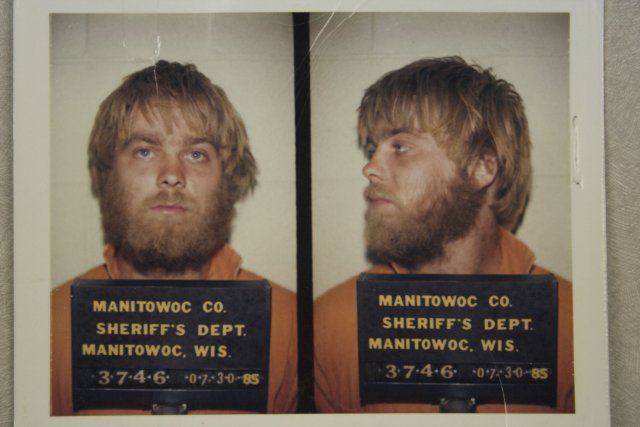‘Shaded’ is an on-going interview series created by 22-year-old Bournemouth-hailing music journalism student, writer and editor James Musker, which focuses on tattooists, the interesting people that wear their work and both the artist and canvas’s relationship to the craft.
Rich Wells is a 29-year-old tattoo artist, clothing designer and co-owner of Dock Street Tattoos, who is currently living and working in Leeds. As part of Things & Ink’s ongoing interview series ‘Shaded’, the documentary enthusiast sheds light on his love of C-list celebrities, his relationship with simplicity and how he sees his Louis Theroux inspired clothing range, Jiggle Apparel, evolving.
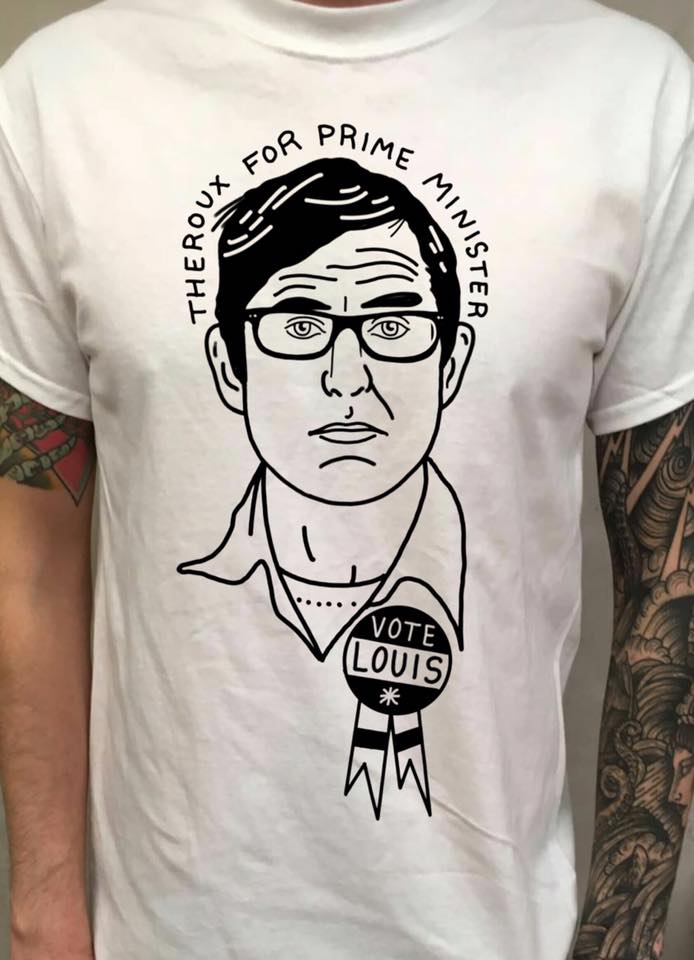
What is Jiggle Apparel? Jiggle Apparel is a Louis Theroux influenced clothing range that’s mainly centred around his infamous rap episode. I design the t-shirts and my friend John, who runs the operation with me, screen prints them and looks after all the online stuff. It’s a Louis Theroux obsession that’s gone a bit too far.
Can you speak about your relationship with Louis Theroux? I’m an old-school Louis Theroux fan. His ‘Weird Weekends’ series is definitely my favourite thing that he’s done. I’ve watched them hundreds of times and they never get old! It’s the only reason I have Netflix.
What influenced you to design and print the first t-shirt that eventually led Jiggle Jiggle Apparel to come together? The first Jiggle Apparel design was originally drawn up as a tattoo design for a flash sheet. I hadn’t thought about putting it on a t-shirt until I uploaded the design to my Instagram account. It got way more attention than I thought it would, so for a bit if fun I decided to print it. People were really into it and Jiggle Apparel was born!
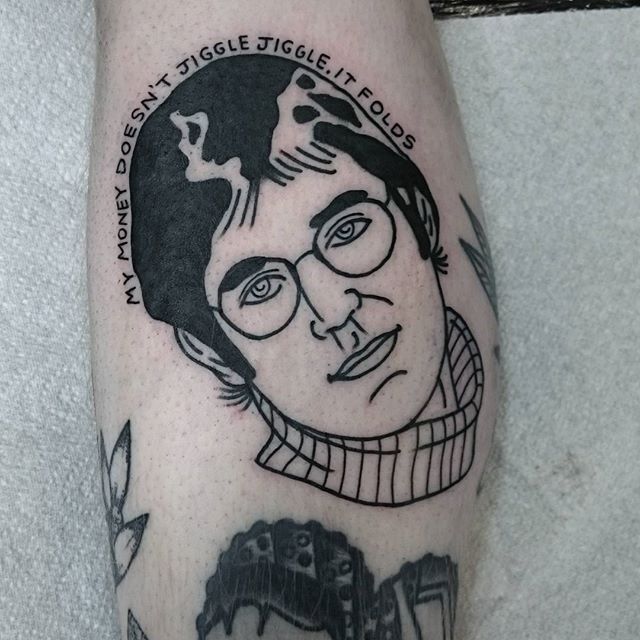
What do you do when you’re not thinking about Louis Theroux? A good 80% percent of my day is spent thinking about Louis. You know, working out how I could meet him, or maybe just brush past him at a UFO convention or a swingers party. The other 20% I spend tattooing at Dock Street Tattoos Leeds. I co-own the place.
What inspires you artistically? I’m really into documentaries and I draw a lot of inspiration from the strange side of human nature: cults, conspiracies – all that type of stuff. I also like to design things around words, like, quotes or songs. I find it’s a really good foundation for a solid idea.
What do you admire in other people’s work? Simplicity is one of the things I admire in other people’s work. I can appreciate tattoos with incredible detail, but I personally get more out of simplistic, bold, powerful designs. The ability to create something effective using only simple techniques really appeals to me.
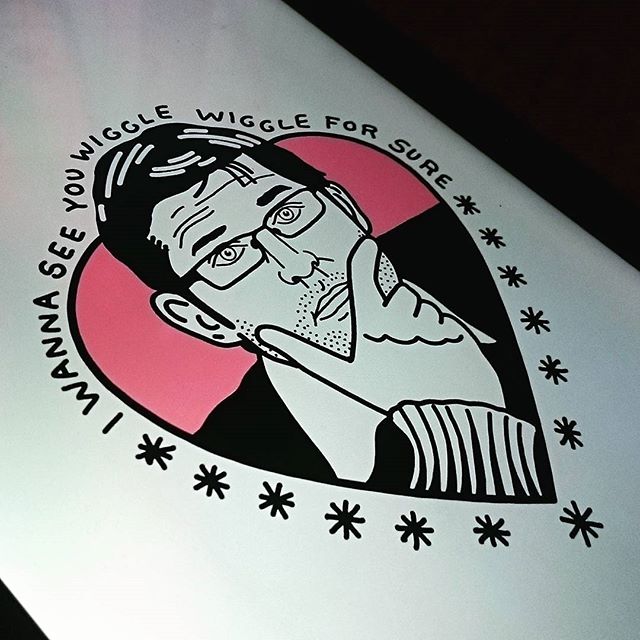
Can you tell me about your own tattoos? I have a photo-realistic black and grey portrait of Ross Kemp on the back of my calf. I got it done as a bit of a joke really. Rather than getting an A-list celebrity tattooed on body, I thought I’d go a little more C list with Kemp, as I was watching a lot of ‘Ross Kemp on Gangs’ at the time. I ended up going to one of his book signings that he held at ASDA a few months after having it done. I told him I had a little something to show him, pulled down my jeans and presented him with the portrait. He was totally freaked out by it. I think he thought I was going to stick a potato sack over his head and stick him in the boot of my Corsa. I haven’t seen him since.
What attracted you to tattoos in the first place? No one in my family really has any. The influence came from seeing the bands I was into at the time with them. I thought they were really cool! My first tattoo was done in a street shop that was next to my old school. I got the tiny sunflower that’s on that girl’s t-shirt on the cover of Green Day’s album Kerplunk. It’s really small, but I thought it was the best thing ever at the time.
Most tattoo artists have no space left on their body for additional work, but do you have any plans for more tattoos in the future? Yeah, I still have some space to get some more work. I’m not totally covered yet. I’d like to get some more single-hit traditional pieces. I guess a Louis Theroux tattoo is on the cards as well.
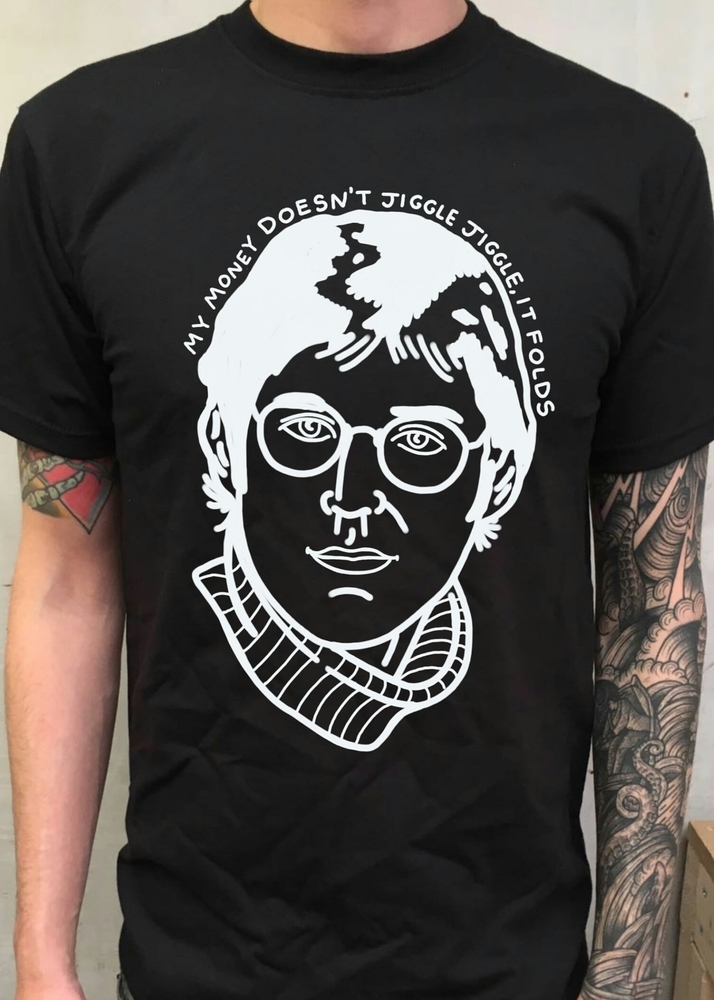
Since you have now found yourself bridging clothing and tattoo art with Jiggle Apparel, can you speak about the relationship between the world of fashion and the world of body modification? I really like the crossover! The high end world of fashion collaborates with tattoo artists all the time. I think company’s like RSI Apparel who commission tattoo artists and illustrators to work on designs for them offer artists a whole new platform for their work to be seen which is really great. However, I could definitely live without Ed Hardy’s diamond studded jeans…
How do you see Jiggle Jiggle Apparel evolving? We’re looking at getting some more merchandise; hats, hoodies, patches. Maybe our own brand of red, red wine would be nice! The ultimate goal though would be for Louis to actually see what we do, stick one of our t-shirts on and possibly take us out to dinner. If he could be there when we open our first store that would also be pretty great.

